Science Friday
Covering the outer reaches of space to the tiniest microbes in our bodies, Science Friday is the source for entertaining and educational stories about science, technology, and other cool stuff.
Can A Microbe Conservation Movement Take Off?
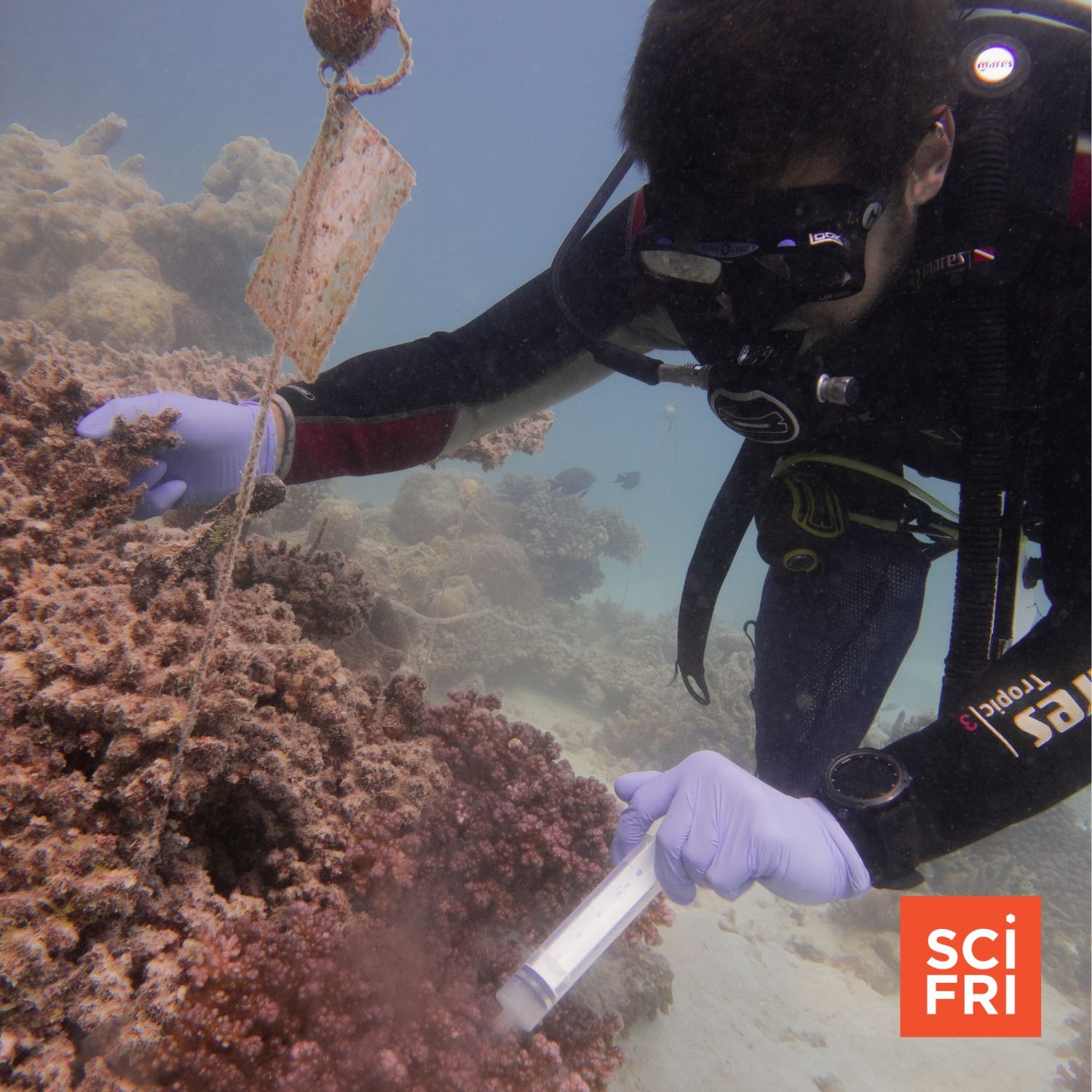
A team of scientists is trying to jumpstart a global conservation movement, on par with efforts to save the rainforests or protect the oceans. But it might be even more ambitious because the target of their quest is invisible, everywhere, and mostly something we try to hand-sanitize away: microbes.
So how do you conserve something that is everywhere and in everything? And why do microbes need protecting to begin with? Host Flora Lichtman digs into it with microbial ecologist Jack Gilbert, who is leading this charge. They chat about the thinking behind microbe conservation plans, and why...
How To Tap Into The Hidden Histories Of Rocks

When we try to commune with nature, many of us turn toward the living: a walk in the woods among swaying trees, chirping birds, blooming flowers.
But earth scientist Anjana Khatwa says not to overlook the inanimate—don’t sleep on rocks. She joins Host Flora Lichtman to talk about her love for rocks beyond the scientific and her new book, The Whispers of Rock.
Read an excerpt from The Whispers of Rock: The Stories That Stone Tells about Our World and Our Lives.
Guest: Dr. Anjana Khatwa is a geologist and author of T...
Fingernails And Indigestion At The 2025 Ig Nobel Prizes

Each year, the Ig Nobel Prizes recognize scientific research that first makes you laugh, then makes you think. For instance, researchers who investigated the pizza preferences of lizards on the island of Togo. Or a man who kept track of his fingernail growth for 35 years.
As is Thanksgiving tradition, we’re sharing highlights from this year’s Ig Nobels on Science Friday. Annals of Improbable Research editor Marc Abrahams acts as master of ceremonies for the 35th First Annual Ig Nobel Prizes, which include 10 awards, several 24-second scientific lectures, and a mini-opera about indigestion.
Guest: Marc...
Why Is Working Out Good For Your Mental Health?

A good workout can make you feel triumphant. And even if that isn’t your relationship with exercise, you’ve probably heard that working out can lift your mood, fight depression, and make you more resilient when life knocks back. But why exactly does exercise improve mental health? Is it all about those endorphins? Does the type or duration of a workout matter if you’re looking for a mental wellness boost?
To help answer those questions and more, Host Flora Lichtman talks with Eduardo Esteban Bustamante and Jack Raglin, who both study the relationship between physical activi...
Everything You Never Knew About Squash And Pumpkins

It’s a wonderful time of the year: squash, pumpkin, and gourd season. But how do those giant, award-winning pumpkins grow so big? And what’s the difference between a gourd and a squash?
In a conversation from 2023, Ira talks with Dr. Chris Hernandez, director of the University of New Hampshire’s squash, pumpkin, and melon breeding program to explore all things winter squash and answer listener questions.
Guests: Dr. Chris Hernandez is an assistant professor of Plant Breeding at the University of New Hampshire in Durham, New Hampshire.
Dan Souza is co-Editor of Cook’s...
Where Does Plastic And Other Trash Go After We Throw It Away?

Have you ever gotten to the end of, say, a jar of peanut butter and wondered if it should go in trash or recycling? If it’s worth rinsing out? And where will it actually end up?
Journalist Alexander Clapp had those same questions, and went to great lengths to answer them—visiting five continents to chronicle how our trash travels. Along the way, he discovered a multibillion-dollar trash trade run by shady waste brokers, and a global industry powered by slimy spoons, crinkled plastic bags, and all the other stuff we throw away. It’s a putrid...
‘A Multi-Headed Beast’: Telling The Story Of Cancer
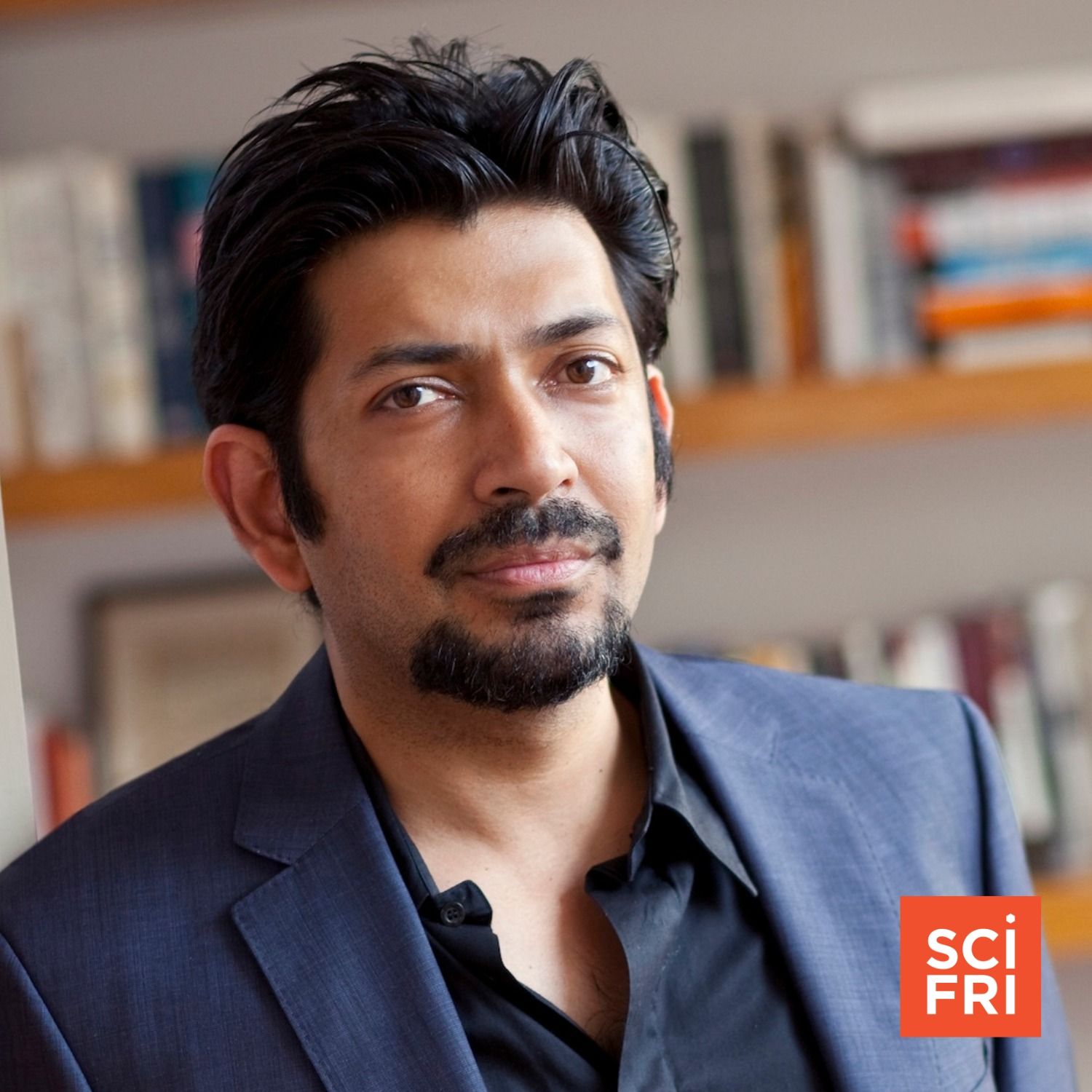
Twenty years ago, a young oncologist started journaling to process his experience treating cancer patients. That cathartic act became the Pulitzer Prize-winning book The Emperor of All Maladies: A Biography of Cancer.
Fifteen years after the book was published, how has our understanding of preventing and treating cancer changed? Host Flora Lichtman is joined by author Siddhartha Mukherjee to talk about what we now understand about screening, environmental risks, and rising cancer rates in young people.
Read an excerpt of the new chapters added to The Emperor of Maladies on the 15th anniversary of the...
African Grey Parrots Are Popular—And It’s Fueling Illegal Trade

African grey parrots are internet stars. It’s easy to see why—the charismatic birds sing, tell jokes, and sling profanities. But how do the endangered birds get from African forests to your feed?
Wildlife crime reporter Rene Ebersole joins Host Flora Lichtman to describe her investigation into the global parrot trade, and the black market for wild African greys that is threatening their existence.
Guest: Rene Ebersole is Editor In Chief at Wildlife Investigative Reporters and Editors (WIRE).
Transcripts for each episode are available within 1-3 days at sciencefriday.com.
...
Attention, Trivia Nerds! It’s A Food Science Fact Feast

After years of getting your emails and phone calls, we know that SciFri listeners are in the 99th percentile when it comes to nerdy knowledge. We’re putting your fact retention skills to the test with the first ever Super Food Science Excellence Trivia Blowout (SFSETBO).
Host Flora Lichtman teams up with trivia kingpin Mangesh Hattikudur, co-host of the podcast “Part-Time Genius,” to quiz one lucky listener on her food science knowledge.
Guest: Mangesh Hattikudur is the co-host of “Part-Time Genius” and co-founder of Kaleidoscope.
Transcripts for each episode are available within 1-3 days at sc...
Can Animal Super-Agers Teach Us Their Secrets?

Some animals have a very different relationship to aging than we do: They don’t get cancer, they never go through menopause, and they live absurdly long lives.
For instance, one bat species can live for more than 40 years, which may not sound like very long but that’s about nine times longer than expected based on its size. For comparison, if we aged on that scale, we’d live for hundreds of years. These bats aren’t the only animal super-agers—there’s a whole menagerie of them.
So what’s their secret? And can we learn an...
How Alphafold Has Changed Biology Research, 5 Years On

Proteins are crucial for life. They're made of amino acids that “fold” into millions of different shapes. And depending on their structure, they do radically different things in our cells. For a long time, predicting those shapes for research was considered a grand biological challenge.
But in 2020, Google’s AI lab DeepMind released Alphafold, a tool that was able to accurately predict many of the structures necessary for understanding biological mechanisms in a matter of minutes. In 2024, the Alphafold team was awarded a Nobel Prize in chemistry for the advance.
Five years later after its releas...
How A Woodpecker Pecks Wood, And How Ants Crown A Queen

If you’ve heard the hammering of a woodpecker in the woods, you might have wondered how the birds can be so forceful. What does it take to whack your head against a tree repeatedly, hard enough to drill a hole? A team of researchers wondered that too and set out to investigate, by putting tiny muscle monitors on eight downy woodpeckers and recording them with high-speed video as they pecked away in the lab.
Integrative organismal biologist Nick Antonson, co-author of a report on the work, joins Host Flora Lichtmen to peck away at the mystery.
...Memories Change. But Can We Change Them On Purpose?
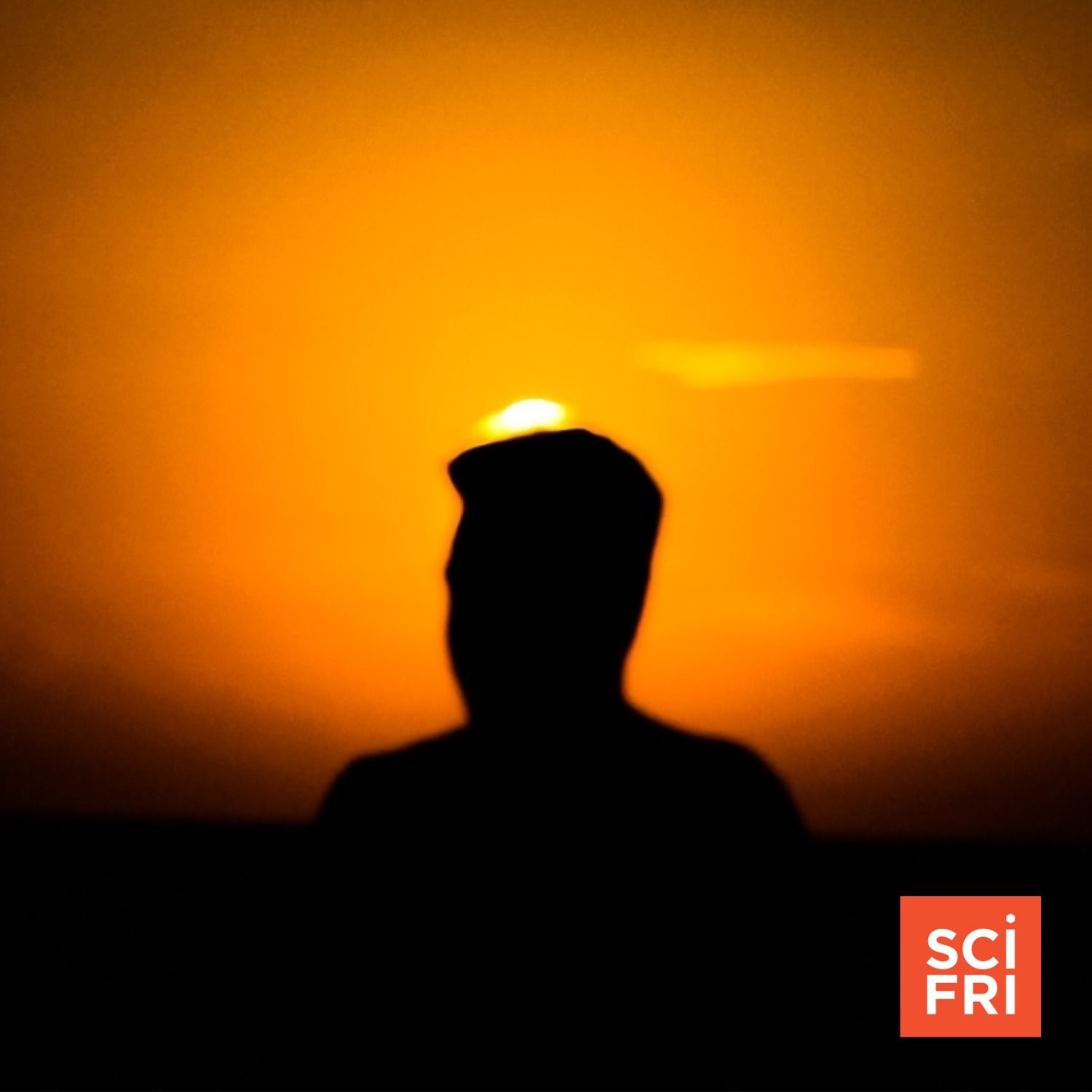
Our memories make us who we are—just ask Barbra Streisand. But despite the lyrics in many popular songs, memories aren’t frozen in time. When we call them up, the details shift and change. And neuroscience research shows that we might be able to take that a step further—to manipulate our memories and even implant false ones.
Neuroscientist Steve Ramirez joins Host Ira Flatow to explain how memory manipulation could revolutionize the way we treat brain disorders. They also discuss Ramirez’s book, How to Change a Memory: One Neuroscientist's Quest to Alter the Past, and how...
Bearded Vulture Nests Hold Trove Of Centuries-Old Artifacts

Bearded vultures build giant, elaborate nests that are passed down from generation to generation. And according to a new study, some of these scavengers have collected bits and bobs of human history over the course of centuries. Scientists picked apart 12 vulture nests preserved in Spain and discovered a museum collection’s worth of objects, including a woven sandal that could be more than 700 years old.
Host Flora Lichtman talks with study author Ana Belen Marín-Arroyo, an archaeologist who studies ancient humans, about how the nests are giving us a glimpse into vulture culture as well as the...
Why The Bassist From Phish Is Funding Research Into ‘Flow State’
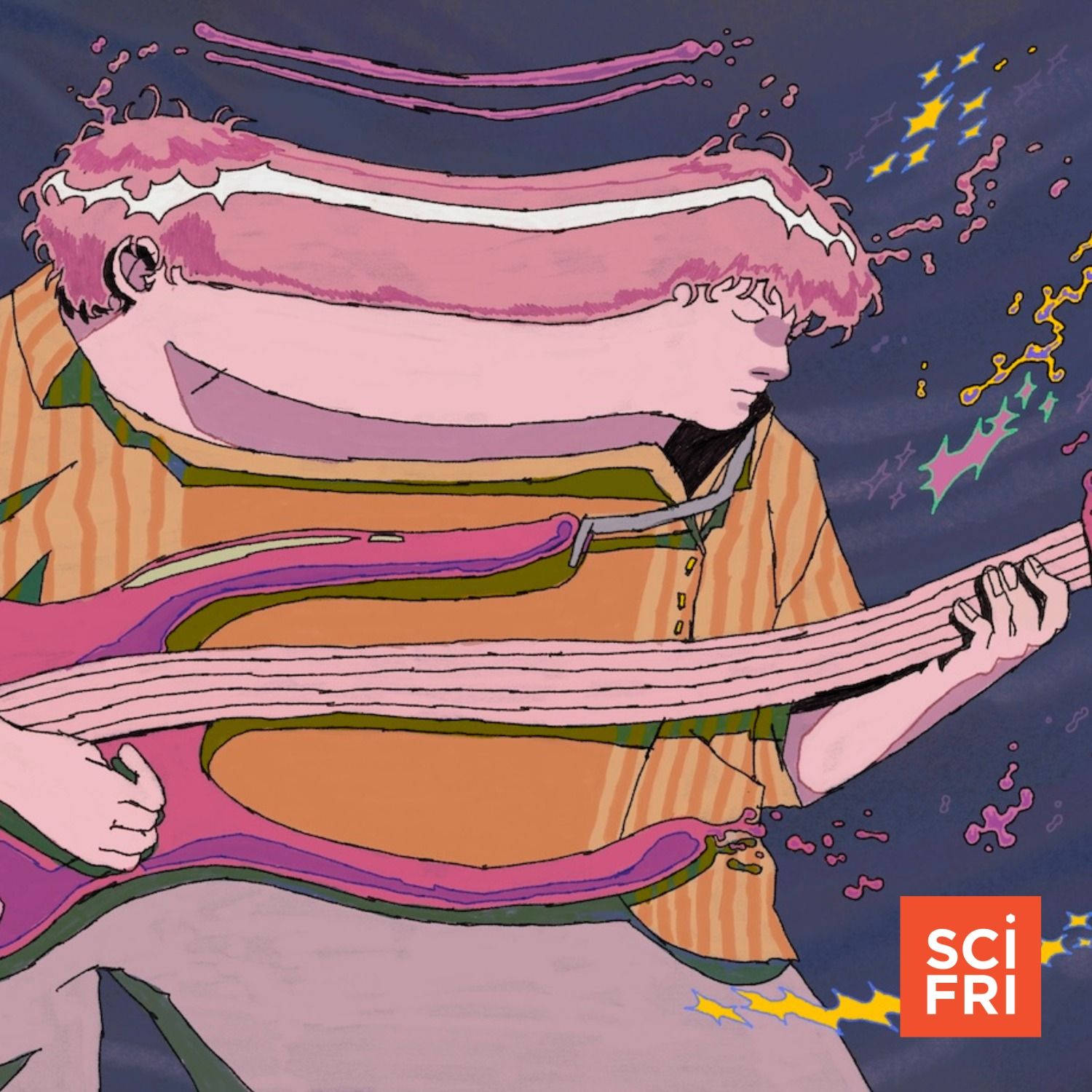
The band Phish has toured for over 40 years. One of the draws of their legendary live shows—which can go on for 8 hours—is finding moments of “flow,” when the band members lock into an improvised jam, finding new musical ideas in real time.
Phish fans live for these transcendent moments, but so do the musicians—to the point that Mike Gordon, the band’s bass player, is funding scientific research to better understand flow state.
Host Flora Lichtman sits down with Mike and his research collaborator, neuroscientist Greg Appelbaum, to unpack their research so far and how...
Even Nobel Prize Winners Deal With Imposter Syndrome

Around 25 years ago, Ardem Patapoutian set out to investigate the fundamental biology behind our sense of touch. Through a long process of gene elimination, he identified a class of sensors in the cell membrane that turn physical pressure into an electrical signal. He changed the game in the field of sensation and perception, and in 2021 shared the Nobel Prize in Physiology or Medicine for his work.
He joins Host Flora Lichtman to talk about his research, the odd jobs he worked along the way, and how he found a sense of belonging in science.
Guest: D...
Study Finds COVID mRNA Vaccines Boost Cancer Treatment

Over the last five years, billions of people have received at least one dose of a COVID-19 mRNA vaccine. New research has found an unanticipated result of these vaccines: Cancer treatments are more effective for some vaccinated patients, and many live longer than their unvaccinated counterparts. This news comes at a time where the federal government is slashing funding for mRNA research.
Host Ira Flatow speaks to lead study author Adam Grippin and vaccine expert Eric Topol.
Guests: Dr. Adam Grippin is a radiation oncologist at the MC Anderson Cancer Center in Houston, Texas.
Dr...
Were Dinos On Their Way Out Before The Asteroid Hit? Maybe Not

One of the biggest debates in the dinosaur world is what was happening right before they went extinct. Were they already declining, or would they have thrived if not for the asteroid? Two recent studies shed some light on this question: one that analyzes a trove of fossils from New Mexico and suggests there was more diversity in the Americas than previously thought, and another that reanalyzes a long-debated juvenile T. rex fossil and finds it’s likely a separate, smaller species.
Host Ira Flatow is joined by authors on those separate studies, paleontologists Steve Brusatte and Li...
Is There Such A Thing As Too Much Resolution On A TV?

As Black Friday approaches, you’re probably being inundated with ads for bigger, better televisions. But just how good is good enough? Are there limits to what our eyes can even make out?
Visual perception researcher Maliha Ashraf joins Host Flora Lichtman to describe her new study on display resolution—including a display calculator she and her colleagues developed to help you determine the optimal display characteristics for a given room. And retinal neuroscientist Bryan Jones joins the conversation to delve into the workings of human vision.
Guests:
Dr. Maliha Ashraf is a postdoctoral rese...
Can A Billion-Dollar Barricade Keep Carp Out Of The Great Lakes?

Decades ago, non-native carp were brought onto fish farms on the Mississippi River to control algae and parasites. They escaped, thrived, and eventually flooded the Illinois River, outcompeting native species and wreaking havoc. If the carp find their way into the Great Lakes, they could do major damage to those vital ecosystems.
There’s a proposed project to stop the fish—but it’s expensive, and not everyone agrees it’s the best solution. Host Flora Lichtman speaks with WBEZ and Grist reporter Juanpablo Ramirez-Franco and carp expert Cory Suski.
Guests: Juanpablo Ramirez-Franco is an environm...
Inside The Race To Save Wild Axolotls
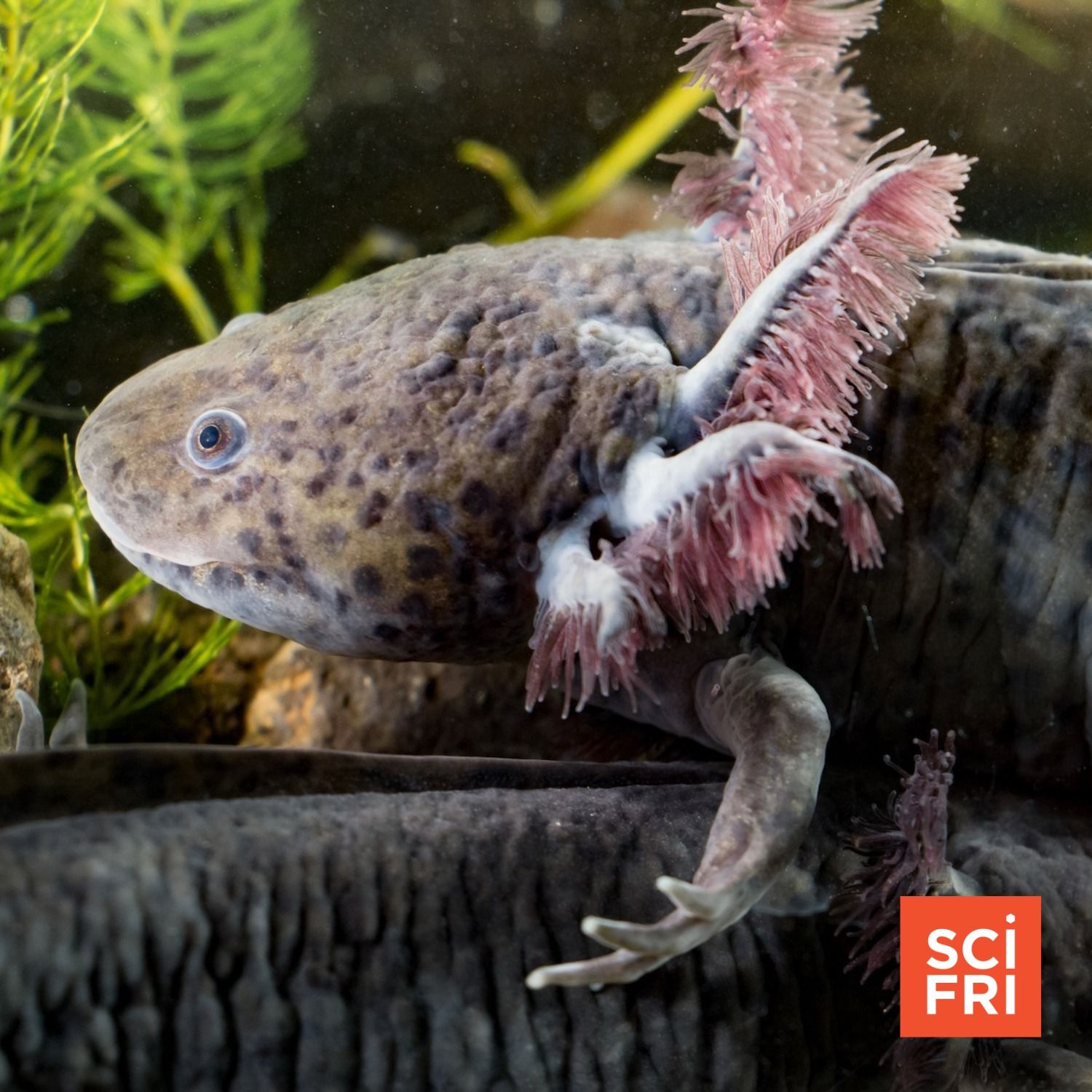
Axolotls are one of the most charismatic and beloved amphibians out there. But did you know that there’s only one place in the whole world where you can find them in the wild? It’s Lake Xochimilco in Mexico City.
There, scientists are scrambling to save them from extinction by creating refuges, using environmental DNA to track them down, and tag-teaming with the farmers who work on the lake. Luis Zambrano, one of the world’s leading axolotl experts, and Alejandro Maeda-Obregón, a molecular biologist, talk with Host Flora Lichtman about their work to protect these b...
Endometriosis Is Common. Why Is Getting Diagnosed So Hard?

Endometriosis is a painful disease that occurs when endometrium-like tissue grows outside of the uterus. It’s extremely common—if you have a uterus, you have a 1 in 10 chance of getting it. Yet, it takes seven years on average to receive a formal diagnosis. What does the latest science tell us about the biology of the condition and how to treat it? And why do so many people have such a difficult time getting diagnosed?
Host Flora Lichtman is joined by endometriosis researcher and patient Linda Griffith to answer those questions and more.
Guest: Dr. Linda...
Why Hasn’t Wave Energy Gotten Its Sea Legs Yet?

We've figured out how to harness renewable energy from many natural systems, like solar, wind, and geothermal power. But what about the ocean’s waves? It might seem like converting wave power into electricity on a large scale would’ve been figured out by now, but the tech is actually just getting its sea legs. Why has it been so hard to develop? And just how promising is it?
Host Flora Lichtman talks with Oregon Public Broadcasting reporter Jes Burns, who reported on Oregon’s massive wave energy test site; and then she checks in with Deborah Greave...
A Halloween Monster Mashup, And A Spooky Lakes Tour

For Halloween, we bring you an ode to three quintessentially creepy creatures: bats, arachnids, and snakes. First, bat researcher Elena Tena joins Host Flora Lichtman to describe tracking the greater noctule bat in flight and learning that it can feed on migratory birds. Then, arachnologist Paula Cushing describes the camel spider, which is neither a camel nor a spider. And herpetologist Sara Ruane highlights one of her favorite snakes, the tiger keelback, which is both venomous and poisonous.
Plus, what makes a lake spooky? A pond possessed? Flora talks with Geo Rutherford, creator of the Spooky Lake M...
What Happens To Your Digital Presence After You Die?

There’s an established playbook for getting one’s affairs in order before death—create a will, name legal guardians, and so on. But there’s also a newer consideration: what will happen to our digital presences, like social media accounts, files, photos, videos, and more. So how do we manage them, and make sure we’re not turned into AI chatbots without permission? (It does happen.)
Information scientist Jed Brubaker studies digital afterlives, and joins Host Flora Lichtman to discuss how we can manage our digital legacies.
Guest: Jed Brubaker is an information scientist and head of...
Why Morbid Curiosity Is So Common—And So Fun

At first blush, the plots of many horror movies don’t seem particularly appealing. Take “The Shining”: A murderous psychopath tries to kill his family in a haunted, secluded hotel. But horror movies have had devoted fans for as long as they’ve been around, and lately, scary movies and television shows like “Sinners” or “The Walking Dead” have made a big splash. Why? What draws us to horror? And why are some people more thrill-seeking or morbidly curious than others?
Host Flora Lichtman talks with two psychologists on opposite poles of horror fandom to flesh out some of the answe...
Peanut Allergies In Kids Are Finally On The Decline

For decades, peanut allergies were on the rise in the US. But a study released on October 20 found that peanut allergies in babies and young children are now decreasing. This drop correlates with a change in guidance from the National Institute of Allergy and Infectious Diseases. In 2017, the agency started recommending exposing children to peanuts “early and often.” Since that recommendation, the prevalence of peanut allergies has dropped significantly.
Sharon Chinthrajah, a physician specializing in allergies and immunology, churns through the findings with Host Flora Lichtman.
Guest: Dr. Sharon Chinthrajah is a physician specializing in aller...
How Do Bacteria Talk To Each Other?

Bacteria have been around for billions of years. Could they have come up with complex behaviors that we just don’t understand yet? Could they have their own language? Their own culture? Their own complex societies playing out right under, and in, our noses?
Microbiologist Bonnie Bassler has been studying these questions for more than 30 years. She talks with Host Flora Lichtman about the wild world of bacterial communication, and how understanding microbes could help us understand ourselves.
Guest: Dr. Bonnie Bassler is a microbiologist at Princeton University.
The transcript for this episode is...
A Lab-Grown Salmon Taste Test And More Foodie Innovations

After years of development, lab-grown fish is taste-test ready for the public. Four restaurants in the US are serving up cultivated salmon made by the company Wildtype. Producer Kathleen Davis gives Host Flora Lichtman a rundown on how Wildtype tastes, initial public perception, and the upstream battle to take cultivated meat mainstream.
Plus, SciFri heads to Burlington, Vermont, where scientists are cooking up the foods of the future—including the building blocks of cell-cultured meat. Flora digs in with foodie researchers Alexis Yamashita and Rachael Floreani about why innovation is critical to a sustainable food future.
G...
What Did It Feel Like To Be An Early Human?

Do science documentaries need a refresh? What if the goal wasn’t just teaching you something, but making you feel something? A new series from the BBC, airing on PBS, called “Human” tries to do just that. It tells the tale of our ancient family tree, embracing the complex and dramatic sides of the story. It asks: Who were the different species of humans that lived on this planet before us? What must it have been like to be in their shoes? And how did we become the only ones left standing?
Ella Al-Shamahi, a paleoanthropologist and host of...
TikTok Is Shaping How We Think About ADHD
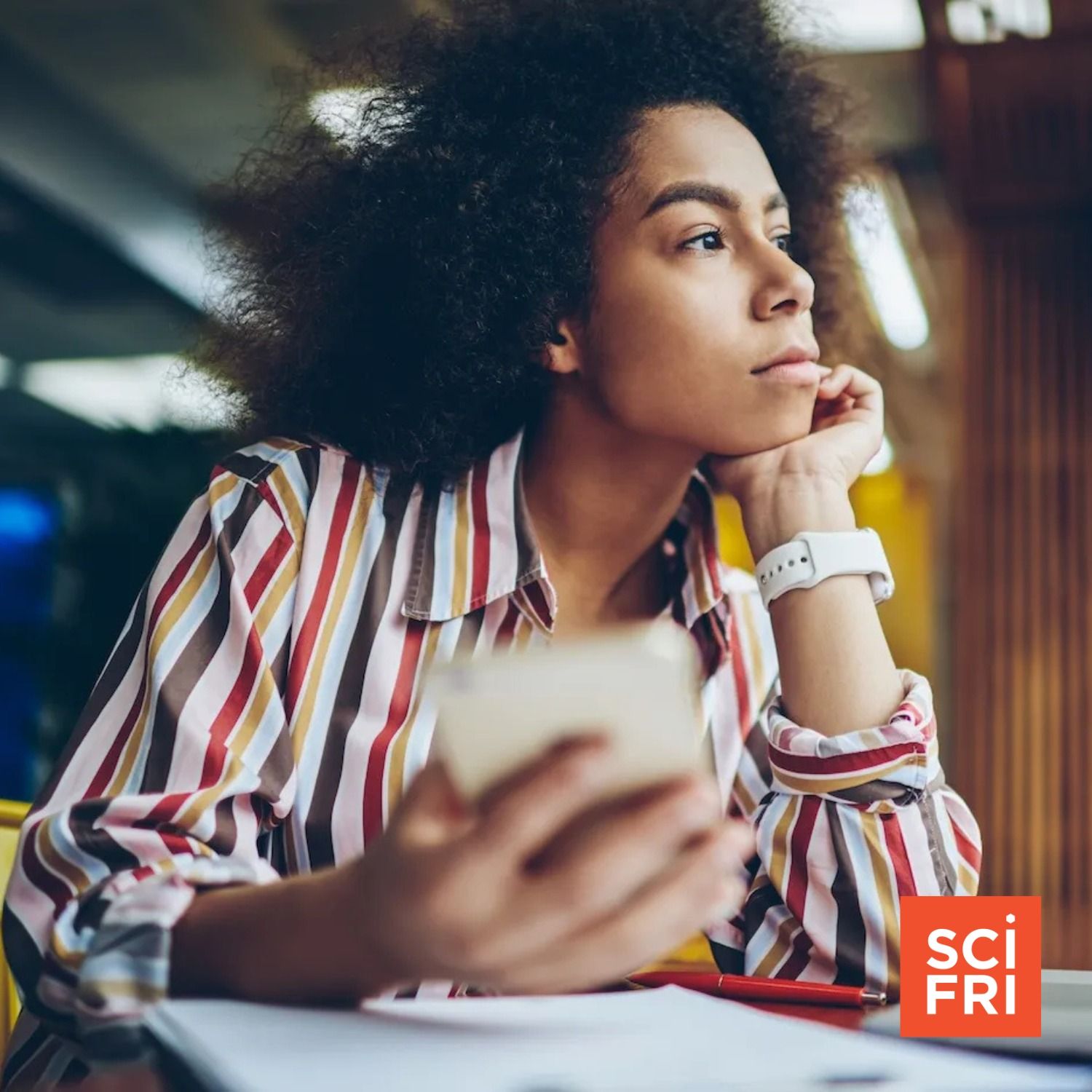
TikTok and other social media sites are full of mental health content—often short, grabby, first-person videos detailing symptoms for conditions like ADHD and autism. But what does this mean for teens and young adults who spend hours a day scrolling?
A new study published in PLOS One analyzes the 100 most viewed TikTok videos about ADHD to assess both how accurate they are and how young people respond to them. Researchers found that about half of the videos were inaccurate or missing key context, and that the more TikToks young adults watched, the less critical they were of...
Footage Shows How Narwhals Use Tusks To Hunt And Play

We’re taking a polar plunge into the science of sea unicorns, also known as narwhals!
Narwhals are mysterious arctic whales with long, twirly tusks protruding from their foreheads, like a creature out of a fairy tale. And it turns out that we don’t know too much about them, partly because they live so far north in the remote Arctic.
An international team of researchers used drones to observe narwhals in the wild and learned new things about their behavior, including how they use their tusks to hunt and play.
Host Flora Lich...
Have Astrophysicists Spotted Evidence For ‘Dark Stars’?

Astrophysicists may have spotted evidence for “dark stars,” an unusual type of star that could possibly have existed in the earliest days of the universe, in data from the James Webb Space Telescope. Instead of being powered by nuclear fusion as current stars are, the controversial theory says that these ancient dark stars would have formed by mixing a huge cloud of hydrogen and helium with a type of self-annihilating dark matter. Dark stars would not have been dark—researchers believe that if they existed, they would actually have been bigger and brighter than current stars.
Astrophysicists Kather...
AI Was Supposed To Discover New Drugs. Where Are They?

AI is everywhere these days, and though there’s debate about how useful it is, one area where experts think it could be game-changing is scientific research. It promised to be particularly useful for speeding up drug discovery, an expensive and time-consuming process that can take decades. But so far, it hasn’t panned out.
The few AI-designed drugs that have made it to clinical trials haven’t been approved, venture capital investment in these efforts has cratered in the last few years, and many startups have shut their doors. So why has it been so hard to mak...
How Math Helps Us Map The World

It’s easy to take maps for granted. After all, most of us have a pretty good map in our pockets at all times, ready to show us how to get anywhere on the globe. But to make a map useful, you have to decide what to keep in and what to leave out—and, most importantly, which mathematical equations to use. Beyond navigating from point A to point B, math and maps come together for a wide variety of things, like working out the most efficient route to deliver packages, calculating the depth of the ocean floor, and more...
The Science Of Replacing Body Parts, From Hair To Hearts

It seems like every week, there’s a new headline about some kind of sci-fi-esque organ transplant. Think eyeballs, 3D-printed kidneys, pig hearts.
In her new book, Replaceable You: Adventures in Human Anatomy, science writer Mary Roach chronicles the effort to fabricate human body parts—and where that effort sometimes breaks down. Host Flora Lichtman speaks with Roach about everything from hair transplants to 3D-printed hearts, and why our anatomy is so hard to replicate in the first place.
Guest: Mary Roach is a science writer and the author of Replaceable You: Adventures in Human Anat...
It’s Not Just You—Bad Food Habits Are Hard To Shake

Remember “The Biggest Loser”—the show where people tried to lose as much weight as quickly as possible for a big cash prize? The premise of the show was that weight loss was about willpower: With enough discipline, anyone can have the body they want.
The show’s approach was problematic, but how does its attitude toward weight loss match our current understanding of health and metabolism? The authors of the book Food Intelligence, nutrition scientist Kevin Hall, who studied “Biggest Loser” contestants at the NIH; and science writer Julia Belluz, join Host Flora Lichtman and answer listener que...
100 Years Later, Quantum Science Is Still Weird
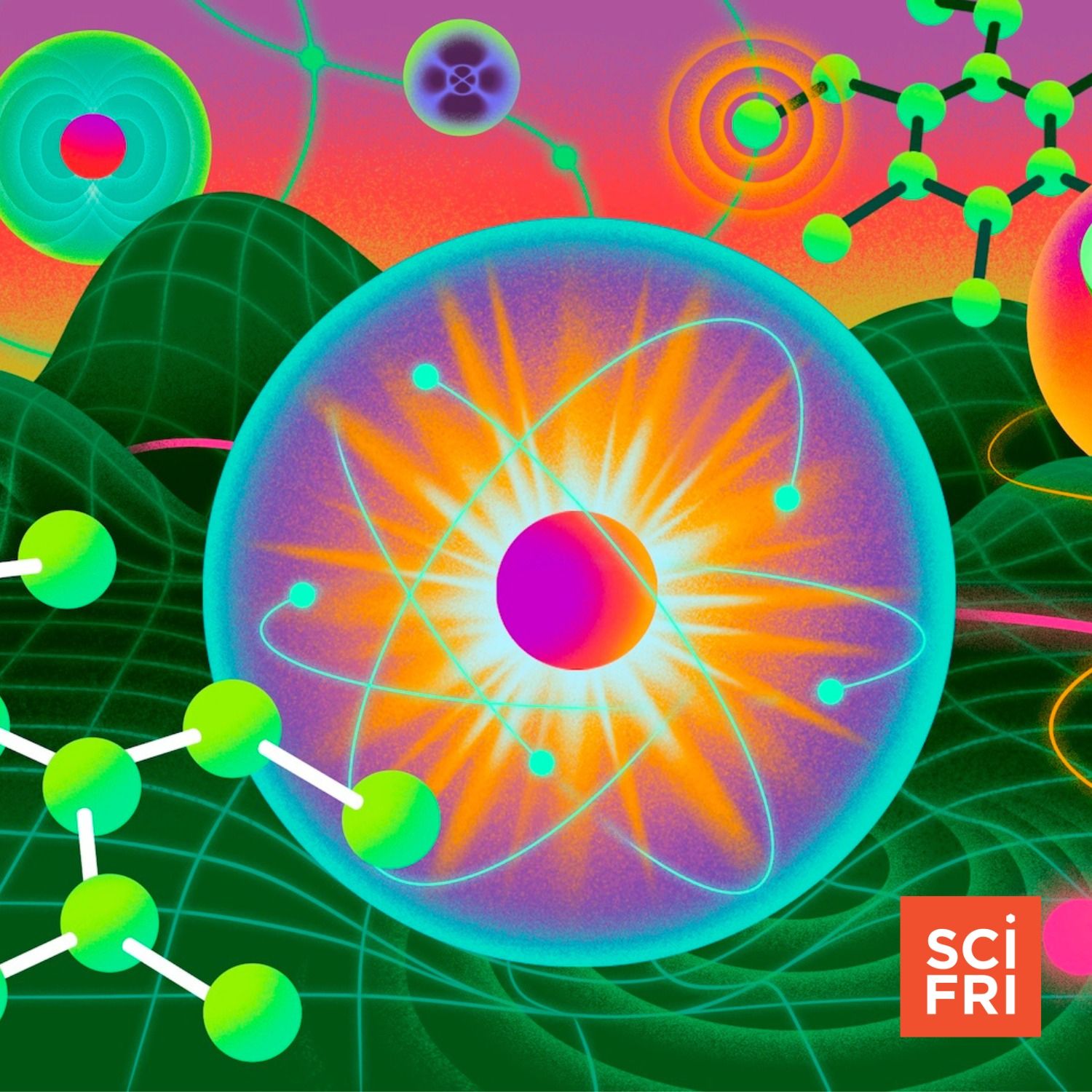
In July 1925, physicist Werner Heisenberg wrote a letter to Wolfgang Pauli sharing his new ideas about what would eventually become known as quantum theory. A hundred years later, that theory has been expanded into a field of science that explains aspects of chemical behavior, has become the basis of a new type of computing, and more. But it’s still really weird, and often counterintuitive. Physicist Chad Orzel joins Host Ira Flatow to celebrate 100 years of quantum science, and separate quantum fact from science fiction.
Guest: Dr. Chad Orzel is the R. Gordon Gould Associate Professor of Ph...
An Off-The-Grid Nobel Win, And Antibiotics In Ancient Microbes

This year’s Nobel Prize in Physiology or Medicine went to three people whose combined discoveries outlined the role of the peripheral immune system—how the immune system knows to attack just foreign invaders and not its own tissues and organs. But when the phone rang for Shimone Sakaguchi, Mary E. Brunkow, and Fred Ramsdell, only two of them picked up.
Host Ira Flatow talks with Nobel Prize winner Fred Ramsdell, co-founder and scientific advisor at Sonoma Biotherapeutics.
Plus, Ira talks with bioengineering professor César de la Fuente, who looks for solutions to the antib...
World Space Week And Promising Climate Tech Companies

It’s World Space Week, and we’re fueling up the rocket for a tour of some missions and projects that could provide insights into major space mysteries. Astrophysicist Hakeem Oluseyi joins Host Flora Lichtman to celebrate the wonders of space science, from the recently launched IMAP, which will study the solar environment, to the new Vera Rubin Observatory, and big physics projects like LIGO.
Plus, the latest in climate tech: MIT Technology Review has published its annual list of climate tech companies that show great promise in work ranging from producing sodium ion batteries to recycling rare...
